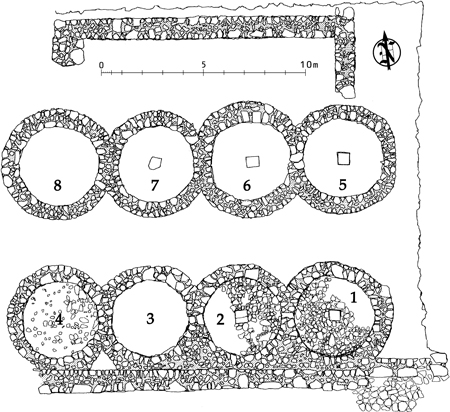A Royal Gift? Bulk Grain Storage in Protopalatial and Neopalatial Crete
Torben P. Kessler
Recent years have witnessed a growing interest of Aegean archaeologists in methods of quantifying the subsistence economy in order to obtain a better idea of which parts of society were either economically dependent or in charge respectively. Quantification of subsistence levels has its difficulties since it involves a series of factors – such as diet composition or human daily calorific need – that have to be dealt with before the actual calculations. In this article, it is argued, firstly, that the Minoan palaces of both the Protopalatial and Neopalatial periods cannot be seen as centres for communal redistribution of staple goods since their storage capacities could not match this task by any means. In fact, they were storing goods only for themselves. Secondly, the interpretation of the Minoan kouloures, or underground pits in the west courts of Knossos and Phaistos, as granaries is reinforced, particularly on the basis of Hittite analogies. Since these long-term stores – when opened – had to be emptied entirely, their function within the Protopalatial economy could be considered either as reserves for the palace inhabitants in times of need, or as central elements of collective ritual activities taking place in the west courts, such as the distribution of grain rations to the community at large.

Kessler T.P. 2015, A Royal Gift? Bulk Grain Storage in Protopalatial and Neopalatial Crete, SMEA NS 1, 137-170


